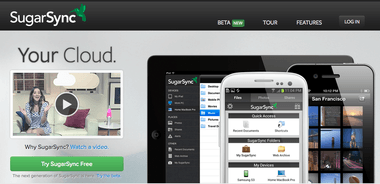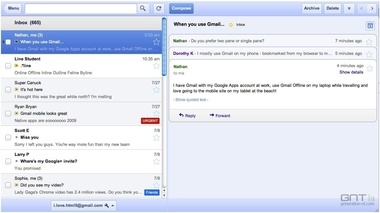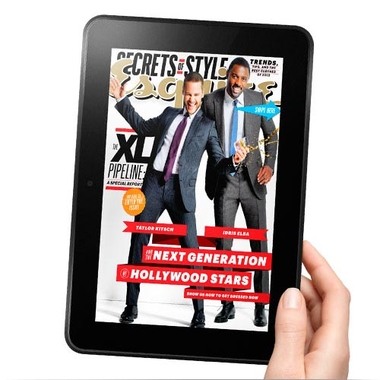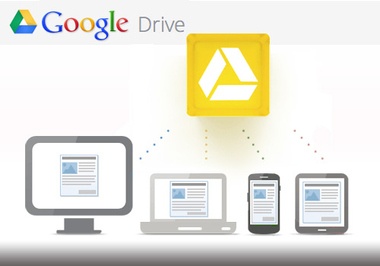That’s not necessarily a bad thing: for example, I’m all excited about the possibility of having all of my most important data available on the go. I mean, what’s the point of having only desktop-available data? What happens if I travel and need to send an important attachment? Or what if I’m visiting a friend and want to show him some pictures of my dog? Shouldn’t it be perfectly normal for me to be able to do this? That’s why we’ve invented welcomed the 21st century so eagerly—these days we have things like iPads, Androids, iPhones, and such, and we should use them to our benefit, not just to browse Facebook. For example, why not using them to get access to all data important to us with no hassle? Here are my favorite ways to do this:
1. SugarSync
Just to give you a short explanation of what SugarSync is I can say that it’s exactly like Dropbox—only better. There are a couple of things SugarSync does way better than Dropbox:
You get 5GB of free disk space instead of just 2GB. You can backup and synchronize any folder you wish, not just the one named Dropbox. You get a much better iOS app (not to mention that there are apps available for every major mobile platform).
The rest of the functionality is pretty similar to Dropbox’s, so you get in-the-background data synchronization and backups. Since we’re talking about accessing your stuff while traveling, however, let’s focus on that. The iOS app allows you to access all of your backed up content even if you don’t have it on your iPad. In addition, you can pick certain folders to be synchronized to your iPad as well, which is probably the quickest way to get any file on an iPad. With SugarSync, you’ll never have to fear that you’ve left something important at home.
2. Gmail
(I know that listing Gmail here seems too obvious, but bear with me—remember we’re talking about traveling.) The thing with email is that it’s only effective if your mailbox is in the exact same state, no matter where you access it from. That’s why using any desktop apps is becoming a bit obsolete. This is also why Gmail has gained so much popularity over the years: thanks to its web-based interface, it’s accessible from anywhere. Also, Gmail has a number of mobile apps available. If you use a couple of devices at the same time, you can get an app on every one of them. Android, iPad, iPhone, you name it. Gmail gives you the option of hooking up every email address you own, not just the ones ending with @gmail.com. Feel free to visit the official tutorials (here) to find out how to do it.
3. Reading Devices
Reading is a great relaxation activity, mostly because you can do it at all times and in all places. However, wouldn’t it be nice to be able to come back to your reading exactly where you left off? If we’re dealing with traditional books, then it’s quite simple, but with digital—or better yet, online content—it’s a completely different story. For digital books, consider getting Kindle , for which there are apps available for PC, Mac, iOS, and so on. What’s great about Kindle is that it automatically synchronizes and remembers the page you’re on, regardless of the device you’re using at the moment. For online content, you might like to get Pocket. This is a very clever service that lets you mark any webpage for “reading it later”, and then you can access your reading list from every device where you have your Pocket installed (again, Android, iOS, web access).
4. Google Drive
Google Drive is the final tool on this list (Google Docs is now a part of Google Drive). The idea is simple: you get an online drive from Google where you can keep your Google Docs files (and other ones too), then by using mobile apps, you can access those files whenever you want. Just like Gmail, everything is easy to use and very functional. To be honest, I’m a big fan of Google Drive and I use it for a number of different things: keeping track of all my articles, my to-do lists and GTD-related projects, my shopping lists, my financial spreadsheets, my workout schedule, my travel plans, and my things-to-eat list. I bet the last one raised your eyebrow—what’s a “things-to-eat” list? Well, I’m a fan of healthy eating and preparing my own food, so I like to list every interesting idea I get the minute inspiration strikes me. If you’re not an “I-handle-my-own-food” type of person then you can still use this “things-to-eat: concept pretty effectively: you can, for instance, list the restaurants you want to visit— find them on Zagat, or Yelp; or the things you want to get delivered through a food delivery service—like eDiets, Diet-to-Go, or BistroMD. You can choose whatever works for you. When it comes to the above, I encourage you to move your own “something”-lists to Google Drive too: you’ll make them much more accessible, and available from any device. Using Google Drive for productivity-related things is pretty straightforward, including keeping any financial spreadsheets (although you should add some additional file protection there), and when it comes to working out and dieting, you’re free to use whatever type of file suits you best (I use simple text documents). This concludes my list. Do you have any more ideas on how to access your data while traveling? What would look good as the item #5 on this list? Featured photo credit: young woman using laptop on the beach via Shutterstock




